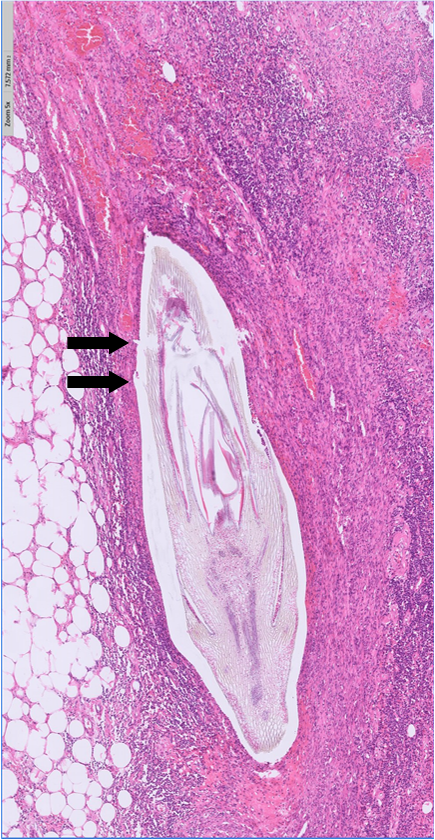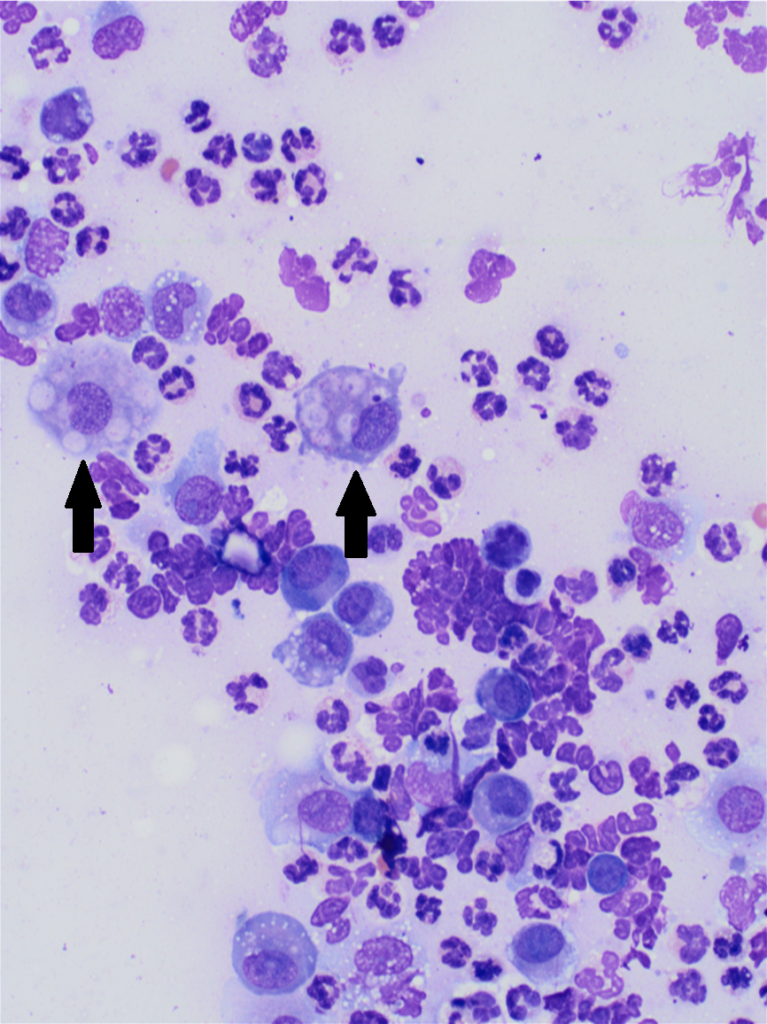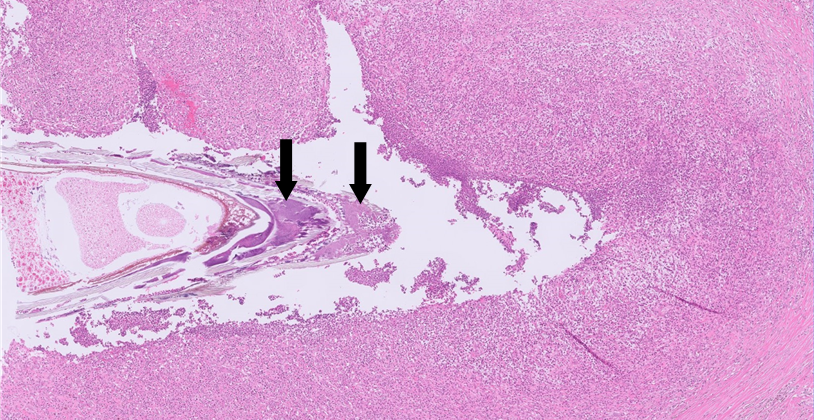GEOFF ORBELL
It is the time of year when we are seeing a lot of foreign body reactions due to migrating grass awns through the lab at the moment.
These are usually due to barley grass (Critesion spp.) of which there are six different species in New Zealand, but other grass species can also be culprits. Barley grasses are annual grasses that usually germinate in autumn, then set seed in summer which is why we start seeing these through the laboratory in February—March.
The most common points of entry are the interdigital webs, external ear canals and intertriginous areas such as the axilla and groin. Longhaired dogs are more commonly affected, as the awns are easily caught in the coat. They can also be commonly found in the conjunctival sac. Ingestion and inhalation of grass awns has also been reported and may lead to internal organ disease.
The awns are covered in microscopic silicised hairs which act as barbs similar to a fish hook, allowing only forward migration. Initial penetration of the skin is followed by migration into subcutaneous tissues where they incite a severe pyogranulomatous inflammatory response (Figures 1 & 2). Often there is secondary bacterial infection due to contamination of the grass seed, which can result in clinical improvement with antimicrobial therapy but quickly relapses following cessation.


Depending on the location of the initial skin penetration, migration can extend into the underlying thoracic or abdominal cavities resulting in exudative effusions e.g. pyothorax or organ abscessation. Grass awns have also been found in the bladder, pericardium, prostate and intervertebral discs. In one recent study 77% of canine sub-lumbar abscesses were associated with migrating plant foreign bodies.
In the skin, these usually present as poorly circumscribed subcutaneous masses which may or may not have fistulated. Cytology is initially recommended and if pyogranulomatous inflammation is identified, ultrasound can be useful in identifying the grass awn (as they are usually in a small cavity surrounded by fluid which provides good contrast). However, they may not always be visible as sometimes only small fragments may be responsible for the inflammatory response. Computed Tomography (CT) has also been successfully used for identification of migrating grass awns in internal organs and body cavities.
Differential diagnoses for pyogranulomatous inflammation identified cytologically include, traumatised follicular cysts or keratinising neoplasms, fibroadnexal dysplasia, penetrating wounds or less commonly actinomycete or fungal infections.
Surgical exploration and debridement is often unsuccessful in locating or removing all plant material therefore excisional biopsies of the entire mass is recommended with submission for histology to identify any foreign body or other causes.
Even histologically it can be difficult to identify the foreign body itself as each histology section only represents a 4 mm slice of the submitted tissue.
As secondary bacterial infections are common with cutaneous foreign bodies (Figure 3), submission of fresh tissue biopsies for culture is also recommended. These should be from non-fistulated areas and have the skin removed to minimise the chance of any skin commensal contamination.

References:
> Griffeuille E et al. A. Comparison of computed tomography and surgical findings and investigation of their associations with outcomes for dogs with sublumbar abscesses. J Am Vet Med Assoc. 259:1300-1308, 2021.
> Combs, M et al. Grass seed foreign body-related disease in dogs and cats: A wide spectrum of clinical presentations. Aust. Vet. Pract. 47:3-24, 2017.
